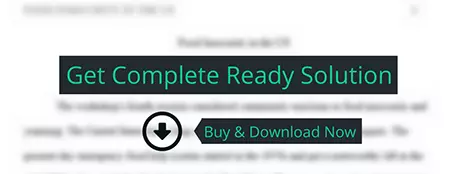DNA Diagnostics Center assignment help
nursing
Description
Project Name: Requirements Document
To use this template:
1. Replace any red italicized text with your own text. You may remove or add sections as needed for
your particular projects.
2. Enter the project name in the title and footer (and change the document version number, if
necessary).
3. If your document is very long, break each numbered chapter into its own document section,
beginning it on a new page. This will make it easier to replace/updagte
4. Delete these instructions and any other italicized instructions.
Date(s):
Prepared by:
Introduction
This document contains the system requirements for project name. These requirements have been
derived from several sources, including brief listing of most important sources.
Types of Reader
In this section, list the different types of reader this document is aimed at. For example, Flash
programmers, graphic designers, end-users, project managers, etc. For each type of reader, clearly state
which sections are most pertinent to them, and which may be safely skipped.
Technical Background Required
Describe here the technical background needed to understand the document in general, and any
particular expertise or understanding that is needed for specific sections.
General Description
This section will give the reader an overview of the project, including why it was conceived, what it will
do when complete, and the types of people we expect will use it. We also list constraints that were
faced during development and assumptions we made about how we would proceed.
This section contains a nontechnical description of the project, usually in narrative form, which may
serve to acquaint new readers with the purpose of the project. It also sets the stage for the specific
requirement listing which follows. You can use your Executive Summary section of your proposal to help
construct this section.
Product Functions
What does your product do? What activities can users perform while using it? List the main functions
that you will build into your product here.
Software Requirements Document Template. Adapted from Stanford University (www.stanford.edu)
User Characteristics
Who do you expect to use your finished product, and why? What is their technical background, their
training or education, their motivation to use it? What obstacles might they encounter, and what
specialized skills will they need?
General Constraints
Did you work under any constraints such as platform or development environment? Did you have to
make your product compatible with any existing software or other products currently in use?
Assumptions and Dependencies
In this section, list any assumptions you made about your project (for example, did you assume that the
finished product would need to be delivered by a cloud service provider?). If your project depends on any
particular technical infrastructure, or requires administrators or others with specific skills, note that here.
Specific Requirements
This section of the document lists specific requirements for name of project. Requirements are divided
into the following sections:
1. User requirements. These are requirements written from the point of view of end users, usually
expressed in narrative form.
2. Availability and Performance requirements.
3. System and Integration requirements. These are detailed specifications describing the functions
the system must be capable of doing.
4. Security Requirements
5. User Interface requirements. These are requirements about the user interface, which may be
expressed as a list, as a narrative, or as images of screen mock-ups.
Functional (User) Requirements
List functional requirements here. Each requirement should be approximately 1 paragraph long and
include a brief description of the required feature and its business value (why it should be done). Follow
each function requirement with at least one use case.
Availability and Performance Requirements
Each requirement should be approximately 1 paragraph long and include a brief description of the
required feature and its business value (why it should be done).
System and Integration Requirements
List detailed system requirements here. Make sure to mention your system’s platform(s), required
operating systems/browsers, etc… If your system is large, you may wish to break this into several
subsections. Include dependencies on existing systems.
Security Requirements
List detailed system requirements here. Each requirement should be approximately 1 paragraph long and
include a brief description of the required feature and its business value (why it should be done).
User Interface Requirements
Software Requirements Document Template. Adapted from Stanford University (www.stanford.edu)
Describe user interface requirements using storyboards/screen mockups. At the very least, you must
provide a proposed mockup for your home page/landing page. Make sure to show key functions and
features along with how to log in. Be sure to also explain and include major features or functions with
narrative to avoid confusion or omission of desired features.
Appendices
If you wish to append any documents, do so here. You may wish to include some or all of the following:
Personas and scenarios developed for this project
Transcripts of user interviews, observations, or focus groups
Copies of communications which contain user requirements
Original project proposals or other historical documents
Lists of similar projects or products, with notes about how they differ from yours
A list of requirements which were "wish-listed" or marked unfeasible at present
Original screen mockups, if they are relevant
Glossary
Include a glossary of definitions, acronyms, and abbreviations that might be unfamiliar to some readers,
especially technical terms that may not be understood by end-users or domain-specific terms that might
not be familiar to developers.
References
List references and source documents, if any, in this section.
Index
If your document is very large, consider compiling an index to help readers find specific items.





